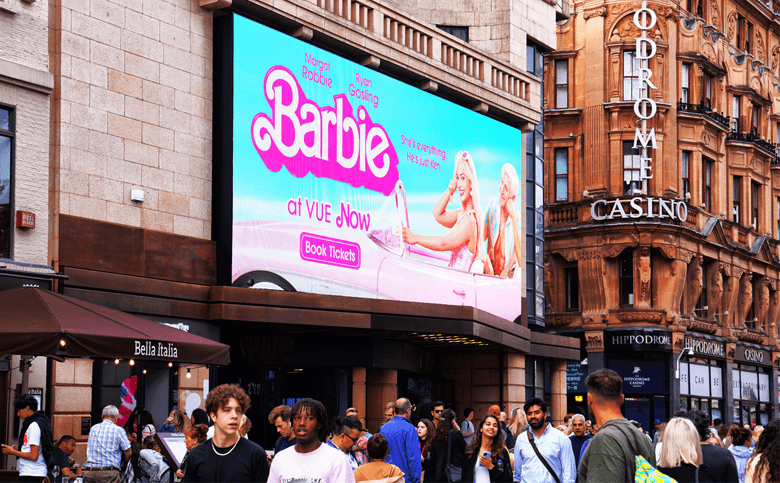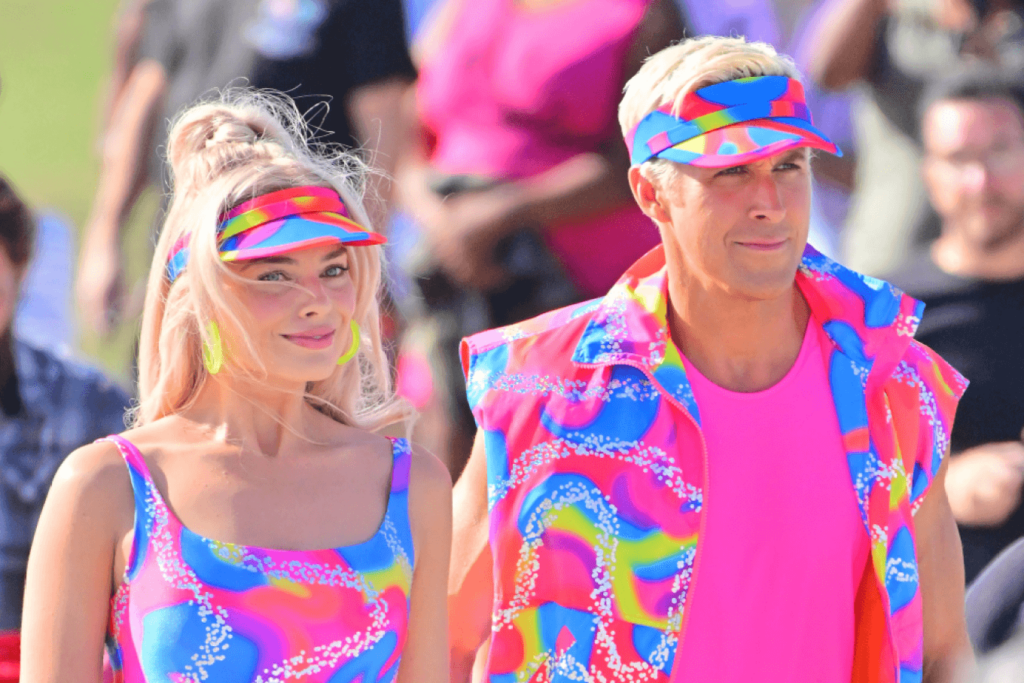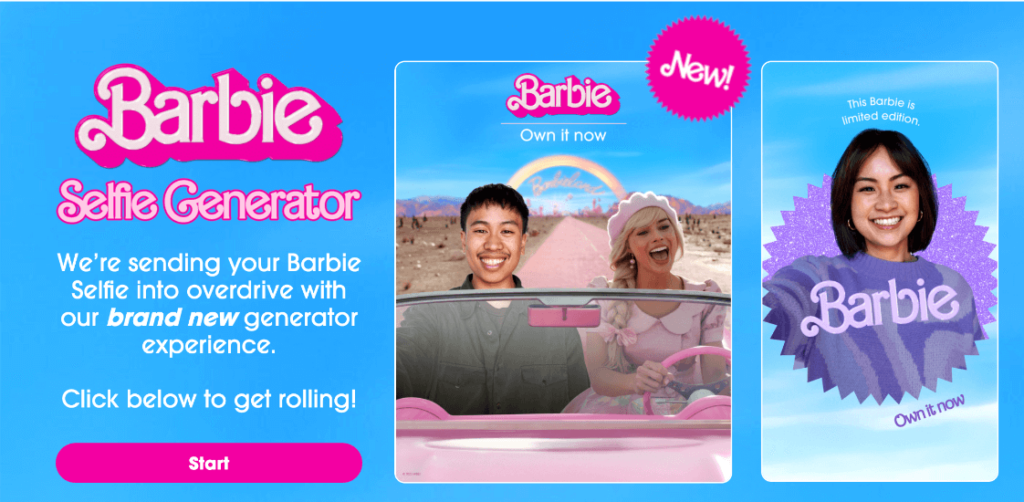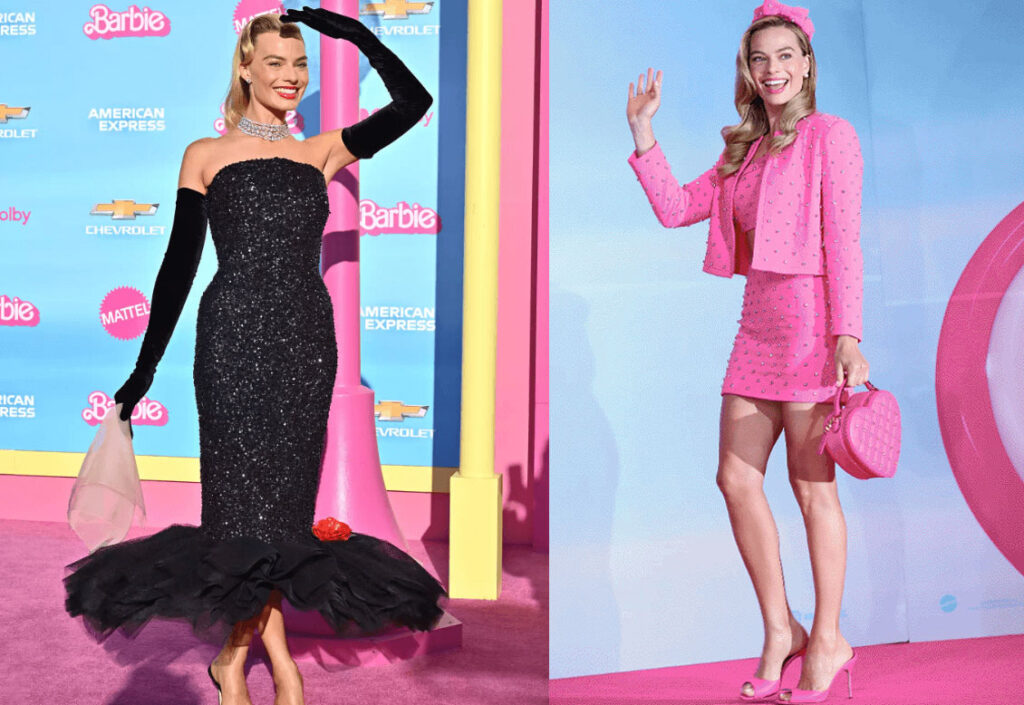Get news, updates, and insights delivered straight to your inbox.
The Year of Barbie: A Marketing Case Study

It’s been about a year since the release of Barbie, one of the biggest movies of summer 2023 about the enduring Mattel line of toys. The idea for a Barbie movie stems back to 2009. Since this initial concept, the film went through multiple scripts, directors, and actors for the starring role. In 2019, it was announced officially that Greta Gerwig and Noah Baumbach would be writing the script, with Gerwig to direct. The lead actor was also announced – Margot Robbie.
Barbie was the source of a lot of conversation last summer. There was its box office impact, social commentary, and, of course, the “Barbenheimer” phenomenon. There’s another reason the Barbie movie generated such hype – its marketing campaign. With movie marketing, production studios often go big. However, this campaign made it feel like we were all in a Barbie World last summer. Learn how the Barbie movie marketing campaign generated such hype and gain inspiration for your campaigns.
The Blueprint of Barbie’s Marketing Success
The Paparazzi Kicks It Off
Before the official advertisements or any Barbie movie partnerships came a type of user-generated content all too familiar in Hollywood – the paparazzi. In a way, the marketing campaign started with paparazzi shots of filming in Los Angeles. For some, these shots might spoil the movie. But for others, they can spark curiosity.
Source: MEGA/GC Images
The images captured showed Robbie in a pink, Western-inspired outfit, sitting on a brick hedge and looking downcast. Other footage showed her interacting with what looked like bodyguards with a worried expression. Paparazzi shots also got the soon-to-be beloved Ken in his Western outfit. These all stimulated conversation about the film’s potential plot.
About one year before the movie’s release, another set of paparazzi photos showed Barbie and Ken in bright fluorescent outfits and roller skates, rolling along streets in LA. These photos dominated social media conversation. Paparazzi flocked the scene for exterior shots, as Robbie confirmed: “It was like hundreds of people watching all [the] time.”
Mixed Marketing Model
Mattel already has a target audience for Barbie toys, and that’s young girls. However, the Barbie movie isn’t just for kids, as the advertising campaigns suggested. To attract a wider audience, the marketing team needed to use multiple mediums, including:
Pink Billboards
Billboard advertising is a longstanding method of movie marketing. Part of what made the billboards for Barbie stand out is the color synonymous with the iconic doll – pink. While some posters and billboards showcased Robbie with the title ‘Barbie’, several simply featured a background of pink with the release date in the bottom right corner.
All this pink paint generated new conversations when discussions of paint shortages came up. Rosco, which manufactures products for the entertainment industry, shared as much of its pink paint with the Barbie production as it could. The movie wasn’t the only one to blame, as the company mentioned supply chain issues and damage to manufacturing materials due to a deep freeze in Texas also reduced supply. Even so, this incident gave the movie more publicity.
Social Media and “Barbenheimer”
To gauge the level of interest the target audience – and moviegoers in general – have, movie marketing teams may look to social media. Are paparazzi shots and official photos being shared on Instagram? What is the reaction to trailers and teasers on YouTube? Social media platforms offer a way to hear directly from the audience.
What’s more, social media empowers user-generated content. Often, all audiences need is a simple prompt to create content that helps advertise the movie, separate from more direct efforts by the production studio. In Barbie‘s case, this was the “Barbenheimer” trend.
With the movie’s release on July 21, 2023, it shared an opening weekend with another highly anticipated film – Oppenheimer. It’s a common tactic for production studios to program releases of very different films on the same weekend, but the stark contrast between these two films was more than amusing. Here’s a serious film about the development of the atomic bomb, and here’s another about a Barbie doll coming to life. Where they overlapped were two summer blockbusters from directors who have made names for themselves – Gerwig for Barbie and Christopher Nolan for Oppenheimer.
The success of Barbie‘s social media marketing couldn’t have been possible without TikTok. In a conversation between Variety and Josh Goldstine, president of global marketing at Warner Bros., Goldstine explains that the team did promotional work with the social media platform, but a lot of the content generated organically: “The whole “Barbenheimer” phenomenon created a series of conversations and engagements.”
Barbie Dreamhouse in the Real World
One of the most ambitious marketing strategies involved working with Airbnb to convert a mansion in Malibu, California into a real-life Barbie Dreamhouse. This project reflected a key plot point in the movie, where Barbie and Ken leave Barbie Land to find their way into the real world. Whereas in the movie, Barbie comes to us, the Malibu Dreamhouse brought Barbie Land to audiences. Several news outlets shared this story, allowing the Barbie movie to draw eyeballs on TV screens just as it was on mobile devices.
Strategically Placed Advertisements
Audiences might groan at the number of previews when seeing movies in theaters, but this may depend on how well the production studio captures their attention and creates interest. Warner Bros. saw a unique opportunity to place a Barbie teaser trailer before Avatar: The Way of Water.
Since Avatar is a sci-fi film with a serious tone, the cross-appeal with Barbie wasn’t obvious. Yet, the advertising team created a correlation by parodying 2001: A Space Odyssey, the classic film by Stanley Kubrick. While this reference is comedic, it suggests the Barbie movie might not be what audiences are expecting. In this way, strategic ads like these generated interest among audiences who might not otherwise see the movie.
AI Technology for Movie Marketing
Barbie‘s marketing campaign is marked by its innovation, so it should come as no surprise the marketing team employed artificial intelligence to spark audience interest. Partnering with PhotoRoom, Warner Bros. developed the Barbie Selfie Generator, where moviegoers could upload an image of themselves into the Barbie movie posters. The editing tool used visual AI and was quick to implement, signaling to other production studios the value of AI in advertising.
The Barbie Selfie Generator had significant implications for the movie’s marketing, with users creating their own images and sharing them across social media. Released in early April, the Barbie Selfie Generator amassed 13 million users by its July release.
Fashion at the Barbie World Tour
Source: AXELLE/BAUER-GRIFFIN/FILMMAGIC
Press tours offer a unique opportunity for marketing teams to generate interest in a movie. In Barbie‘s case, the focus was on fashion.
The press tour involved writer-director Gerwig, plus Robbie and the rest of the cast, traveling to key spots throughout the world, aptly called the Barbie World Tour. Robbie used the press tour and other red carpet events as an opportunity to dress up like Barbie. Stylist Andrew Mukamal, who traveled with the cast, sourced outfits at each location that paid homage to an original Barbie doll look.
The SAG-AFTRA strike cut the press tour short, but this didn’t stifle buzz about the Barbie movie. A press release announced a new fashion photo book called Barbie: The World Tour. The book would contain photos taken by renowned fashion photographer Craig McDean, showcasing Robbie in the various looks she wore at different stops along the press tour.
This fashion photo book represents the vision of a Barbie experience, one that doesn’t end when the credits roll and audiences walk out of theaters. It offered another way for fans to stay excited about the Barbie brand.
165+ Brand Partnerships
Even before the live-action movie, Mattel expanded Barbie beyond toys to include fashion, branded household products, and animated films. It makes sense the Barbie movie followed this pattern with multiple partnerships. Even the marketing team couldn’t believe the number of Barbie movie partnerships that developed, which exceeded 165.
Partners explored ways to merge their branding with the Barbie brand, with some developing special or limited product lines to coincide with the film’s release. Even though Barbie as a “fish-out-of-water” in the real world was supposed to be the movie’s focus, it felt more like Barbie World was taking over ours.
Check out the wide-ranging collaborations the Barbie movie developed:
- Two free one-night stays at the Malibu Dreamhouse from Airbnb
- Popcorn holders shaped like Barbie’s Corvette and more merch from AMC Theaters
- Barbie movie apparel and accessories from Forever 21, rue21, PacSun, Hot Topic, Gap, and other clothing stores
- A line of pink bears from Build-A-Bear, plus a remote-controlled Barbie car based on the one in the movie from Hot Wheels
- “B”-branded clogs with Jibbitz featuring symbols from the movie from Crocs
- A line of jewelry based on the Barbie movie from Alex and Ani
- A pink Barbie burger from Burger King in Brazil
- Cotton candy Barbie ice cream from Cold Stone
- A Barbie makeup line from NYX and limited-edition nail polishes from OPI
- Barbie-branded hair products from Revlon and L’Oreal Professional
- Party decorations for themed birthdays from Party City
- A pink console from Xbox
- Barbie-inspired elements for matching and complimenting users on Bumble
- A Barbie newsletter called Unboxed to keep fans up to date from The Washington Post
This list represents just a fraction of the Barbie brand partnerships that came from the movie. These collaborations touched nearly every space, from fashion to health and beauty to hospitality and food and beverage. Alongside the other marketing strategies, these partnerships helped Barbie reach such widespread visibility.
“Each time we released something, the movie was getting to a new level of engagement in the culture,” expressed Josh Goldstine in the interview with Variety mentioned above.
The Curiosity Factor
“If you love Barbie, this movie is for you; if you hate Barbie, this movie is for you.” This is the tagline appearing in the main trailer. It’s controversial, which moviegoers might not have expected for a movie based on a doll. To be sure, Barbie is a feel-good and fun movie. But that’s not all Barbie is about. Contrary to popular belief, there’s more beneath the surface to Barbie. Gerwig wanted audiences to know that.
As Robbie expressed in a cover interview for British Vogue, moviegoers might have had an existing perception of Barbie, but those preconceived notions were challenged when they discovered the director was Greta Gerwig. With movies like Lady Bird and Little Women under her belt, Gerwig indicated feminism was integral to her filmography.
So, the tagline indicated an awareness that not everyone shared the same perspective on the Barbie brand. It promises to call out the feminist reactions to Barbie over the years, plus bring something nostalgic for kids and adults who grew up playing with the dolls.
Curiosity grew when reviews came out and the social commentary became the focus of many conversations. Whether positive or negative, these reviews all helped increase the buzz. This tagline was part of a wider “breadcrumbs strategy”, where the marketing team introduced information about the movie piecemeal, stimulating curiosity that ultimately encouraged more earned media.
Barbie and the Future of Movie Marketing
Estimates about the Barbie movie marketing budget are staggering, with some claiming it totaled about $150 million. These efforts paid off at the box office, as Barbie grossed at least $1.4 billion globally.
Beyond the impact of its own success, Barbie offered a glimpse into what production studios might need to consider when promoting their upcoming films. What’s more, it shows how brands can think outside the box with partnerships and omnichannel marketing to reach target audiences.
Your brand might not operate in the entertainment space, but you can still make an impact in your industry like Barbie has had in Hollywood. It begins with a tool like MarcomCentral, which centralizes brand management and distributed marketing so your business can develop more meaningful marketing materials. Discover more case studies or request a demo today to see how MarcomCentral can help you.
You might also like







